2012 Lincoln MKZ Hybrid
How does 41 city mpg/36 highway sound for a midsize luxury sedan that offers a long list of interior bells and whistles?
If that grabbed your attention, then test drive the 2012 Lincoln MKZ Hybrid. Or, if you can wait until late fall, an all-new 2013 model ups the fuel economy numbers to an expected 47 city/44 highway.
But let’s get back to the 2012 model, a car that gets better fuel economy than anything else in its class.
Last year, Ford officials were quoted as saying it wants as much as 25 percent of its global fleet to be powered by motors and batteries by 2020. The company expects 75 percent of those vehicles to be conventional hybrids – and the rest made up of pure electric cars or plug-in hybrids.
The 2012 Lincoln MKZ Hybrid is a good example of how Ford is scaling up to reach its target—by spreading its best electric-drive technology across common platforms. Instead of dreaming up a brand new purpose-built gas-electric vehicle for its Lincoln luxury nameplate, Ford migrated the technology from its award-winning Ford Fusion Hybrid to the MKZ.
Following in Tracks of Ford Fusion Hybrid
With the hybrid powertrain for the Fusion mid-size sedan in the barn, it was a no brainer to extend it to the Lincoln MKZ. Under the hood is Ford’s second-generation Hybrid Powersplit drivetrain. Cutting through the engineering-speak, this means a 156 horsepower, 2.5-liter lean-burning, Atkinson cycle gasoline engine sharing motivational tasks with a 106 horsepower AC electric motor. A planetary gear set transmits the blended output to an electronically controlled continuously variable transmission (CVT) that directs the power to the front wheels.
Differences in the torque curves of the gas engine and electric motor means that the system’s output is 191 hp, a more than adequate amount of power for a midsize sedan. Ford doesn’t publish torque numbers for the electric motor, but the four-cylinder engine produces 136 pounds-feet.
As a parallel, or “full,” hybrid system, the MKZ Hybrid is able to operate under pure-electric power only, gasoline power only, or a combination of the two. The system makes all the decisions: when to engage motor, engine, or both. When the 275-volt nickel-metal-hydride battery pack is fully charged, the car can operate as an electric vehicle (EV) up to 47 mph for around two miles before the gas engine kicks in. And, unlike other hybrid vehicles, you don’t have to drive like Miss Daisy to reach the electric top speed.
The judgment of the MKZ’s hybrid powertrain by auto critics, not unexpectedly, parallels the Ford Fusion Hybrid. Car and Driver stated, “When we recognized the Fusion hybrid as a 10Best winner in 2010, we noted that ‘you can drive it for fun (a hybrid first) or for mileage — which is also fun. “This applies verbatim to the MKZ hybrid.” As for the transition from electric motor to gas engine, CNET said it “was almost imperceptible.”
As for ride and handling, reviewers have been mostly positive. Motor Trend had this to say: “Off-center steering motions are Lexus-liquidy; the ride’s absorbency suggests the sponges in the suspension are from Neiman Marcus; and the brake pedal says this is a luxury car being stopped with virtually no regen-braking sensation.” And Popular Mechanics’ reviewer said, “As Lincolns go, the MKZ has always been a fairly flat-cornering machine, and the hybrid version of the sedan is no different.”
Exterior and Interior
The MKZ was restyled for 2010 and continues with no changes for the 2012 model year. The only thing that distinguishes the hybrid from the gasoline MKZ is small hybrid badges on the front doors and trunk lid. Up front is a trademark Lincoln bold waterfall grille that mimics the Lincoln MKS, which was in turn inspired by the styling of the Lincoln MKR concept. With the more rounded sheetmetal up front, the grille blends well with the unchanged main bodywork. In back, wide, low taillights – another long-standing styling trademark – are separated by a bit of sheetmetal and ornamented with the Lincoln logo, mirroring the front styling.
Overall, the car is sensibly proportioned with just the right amount of chrome accents. Designers added it like a woman adds pearls to a black dress.
The cabin follows the Fusion Hybrid’s layout, and while it is more upscale, reviewers have panned the design, which they say is behind the benchmarks set by other luxury class automakers. “Unfortunately, while the mechanicals in the MKZ Hybrid are as solid as can be,” says Popular Mechanics, “the interior falls far short of what we’ve come to expect from Ford’s designers.”
That said, the cabin can be described as business-class luxury, conveying the attributes of simplicity. Leather, climate controlled seating is superb and the 10-way power driver’s seat teams up with the fully adjustable steering column to produce an excellent driving position for people of all statures.
The list of features available with Lincoln MKZ Hybrid is extensive: SYNC (Ford’s voice-activated communications and entertainment system); adaptive HID headlamps; 10-way power seats; heated and cooled front seats; reverse sensing system; keyless entry; capless fuel-filler; a suite of safety features including dual-stage front air bags; parental key systems to limit speed and audio volume for teens; and integrated spotter mirrors.
Let’s not overlook the wood trim using eco-friendly veneers from “well-managed forests” and the standard “Bridge of Weir” leather seats, which show off the character of the grain and use a chromium-free tanning process.
Like the Fusion Hybrid, the Lincoln features what Ford calls the SmartGauge. It helps the driver to learn specific techniques to achieve higher efficiency. The dashboard interface offers feedback to the driver—both visual and sound. In other words, it actually talks to you. The gauge cluster is comprised of dual hi-resolution LCD screens to display instantaneous mileage and fuel economy history—as well as key data including battery charge, engine output and accessory power consumption.
The Lincoln version enhances the animation of a vine of leaves that grows as the driver(s) becomes more efficient over time by adding white apple blossoms. When the entire bouquet of five blossoms is shown, the driver has saved about 200 gallons of gas, or 4000 pounds of CO2, according to Lincoln. To prevent sensory overload, the system allows the driver to decide how much information to see, and what can be ignored.
Kiss Hybrid Premium Good-bye
When introduced in the fall of 2010 as a 2011 model, Lincoln did something no other car company had done, priced the Lincoln MKZ Hybrid the same as the gasoline-powered model. That carries over for the 2012 edition and buyers can select either for the starting price of $34,755.
The consistent criticism levied against hybrids is their additional cost compared to similar conventional vehicles. Hybrid critics acknowledge that gas-electric cars save gas, but they say the additional cost – in some cases, thousands of dollars more—means that consumers will not recoup the premium during their ownership period. That argument is erased if the hybrid version is offered at the same price as the conventional gas-powered car—or if the premium is only a couple hundred dollars. The hybrid premium argument is similarly erased if a popular high-volume vehicle is only offered as a hybrid.
For buyers considering a Lincoln MKZ, the hybrid model makes for an easy choice. The only compelling reason to choose the gasoline MKZ over the hybrid, it would seem, is if you drive on snowy or icy roads and choose the optional all-wheel drive.
The MKZ Hybrid faces only one midsize luxury hybrid competitor: the Lexus HS 250h. While both are four-door sedans, the MKZ offers considerably more interior space, delivers better fuel economy – plus 6 mpg city, plus 2 mpg highway – and costs $2,275 less than the Lexus. Motor Trend put it this way, “The main bogey for the MKZ Hybrid is the Lexus HS 250h, and Lincoln has come out with guns blazing, pushing the Lincoln’s better fuel economy, and the fact that it has more standard luxury, technology and safety features than the Lexus.”
If you are not dead set on buying luxury, take a look the MKZ’s blue jeans brother, the Ford Fusion Hybrid. While the Lincoln’s interior is more refined, they both have the same hybrid powertrain that delivers equal fuel economy. The difference between the two? The Fusion Hybrid is $6,000 less.
The MKZ makes a good impression, graced as it is with good manners, high-tech galore and fashionably outfitted with the top-of-the-line leather and wood. Add 41 mpg in the city and that earns it a place on your shopping list if you’re looking for great hybrid technology in a luxury package.
Should You Wait For The 2013 MKZ Hybrid?
Wait for the 2013 MKZ Hybrid if you want the advances in fuel economy, high-tech gear and safety features that accompany an all-new design. Waiting will also mean the car’s styling will look current for several years and it will be worth more at resale than the outgoing 2012 model. But factor in the strong likelihood that the 2013 MKZ Hybrid will cost more than the 2012 model and the possibility the hybrid version may be priced at a higher price than the new gasoline model.
If you don’t place a premium on the latest styling or technology buy, the 2012 MKZ Hybrid, it will serve you well. Plus, you can save money with the expected manufacturer incentives and dealer discounts as inventories of the 2012 model are cleared out to make way for the 2013 MKZ Hybrid.
Prices are Manufacturer Suggested Retail Price (MSRP) at time of publication and do not include destination charges, taxes or licensing.
Become an AutoGuide insider. Get the latest from the automotive world first by subscribing to our newsletter here.
More by Larry E. Hall



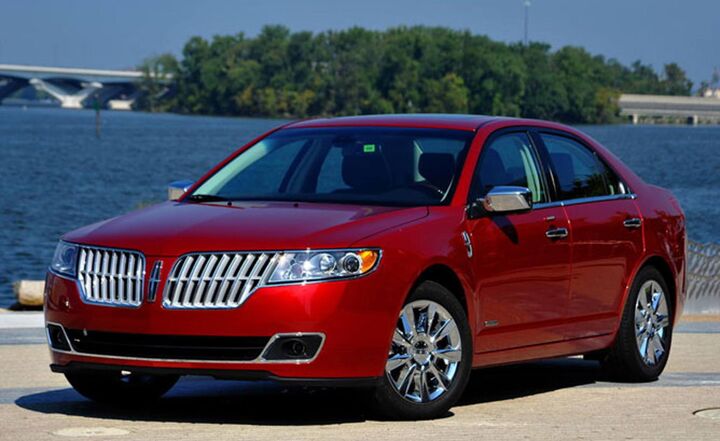





















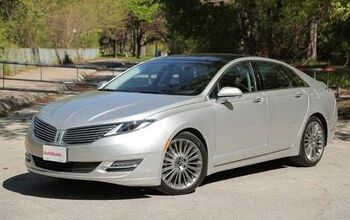



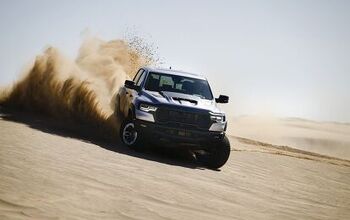





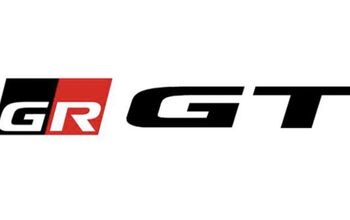
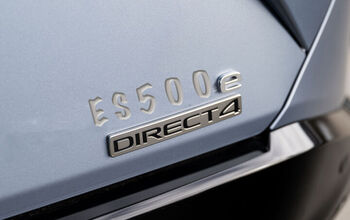
Comments
Join the conversation